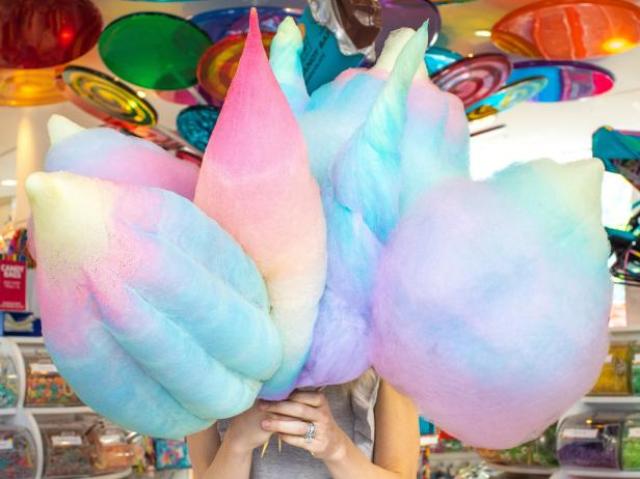Cotton candy is a spun sugar confection that resembles cotton. It usually contains small amounts of flavoring or food coloring. The candy is made by heating and liquefying sugar, spinning it centrifugally through tiny holes—by which the sugar rapidly cools and re-solidifies into fine strands. It is often sold at fairs, circuses, carnivals, and festivals—served in a plastic bag or on a stick or paper cone.
The typical machines used to make cotton candy include a spinning head enclosing a small sugar reserve bowl into which a charge of granulated, colored sugar is poured. Heaters near the rim of the head melt the sugar, which is squeezed out through tiny holes by centrifugal force. Colored sugar packaged specially for the process is milled with melting characteristics and a crystal size optimized for the head and heated holes. Granulated sugar used in baking contains fine crystals which spin out unmelted, while rock sugar crystals are too large to properly contact the heater, slowing the production of cotton candy.

